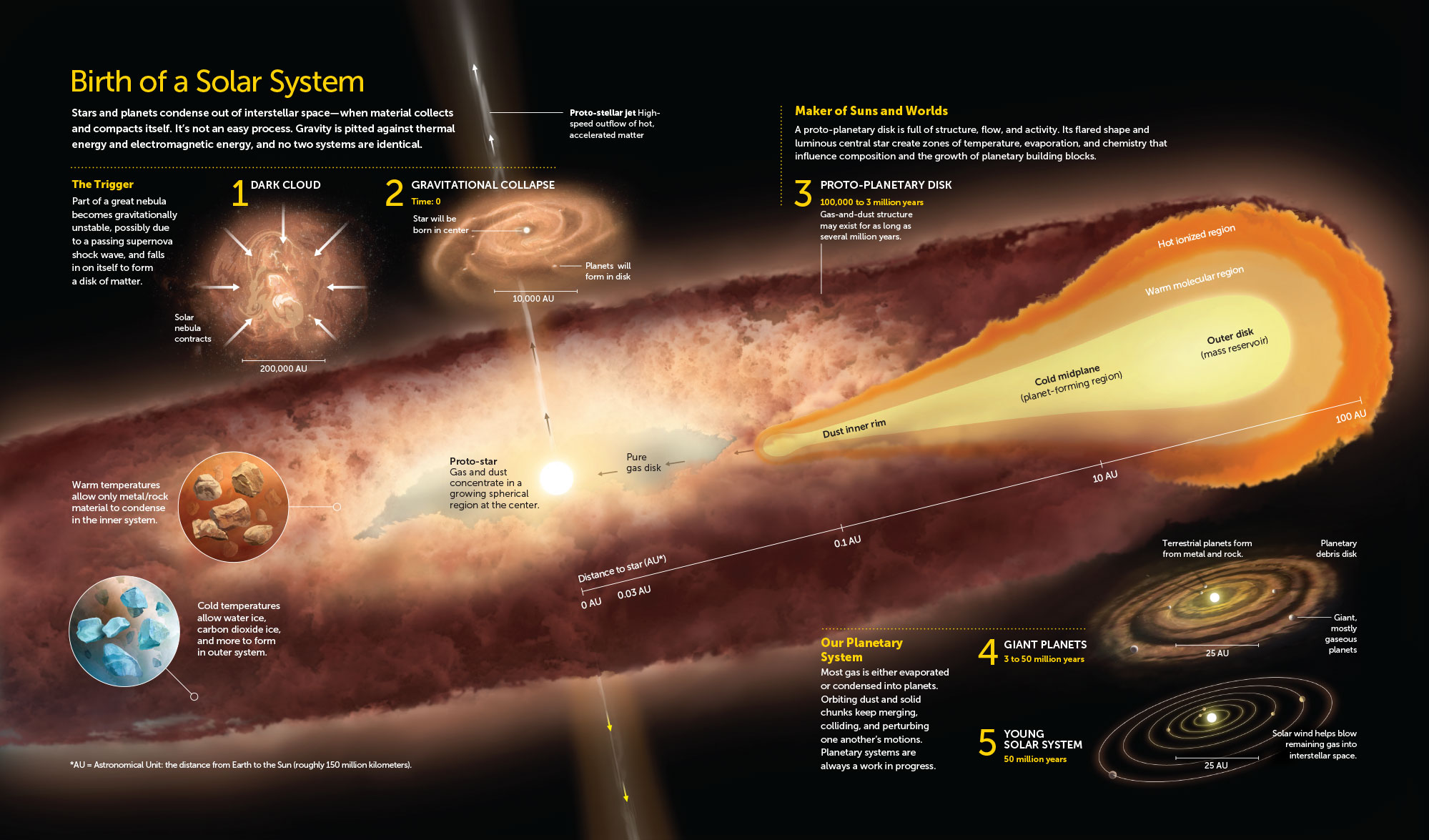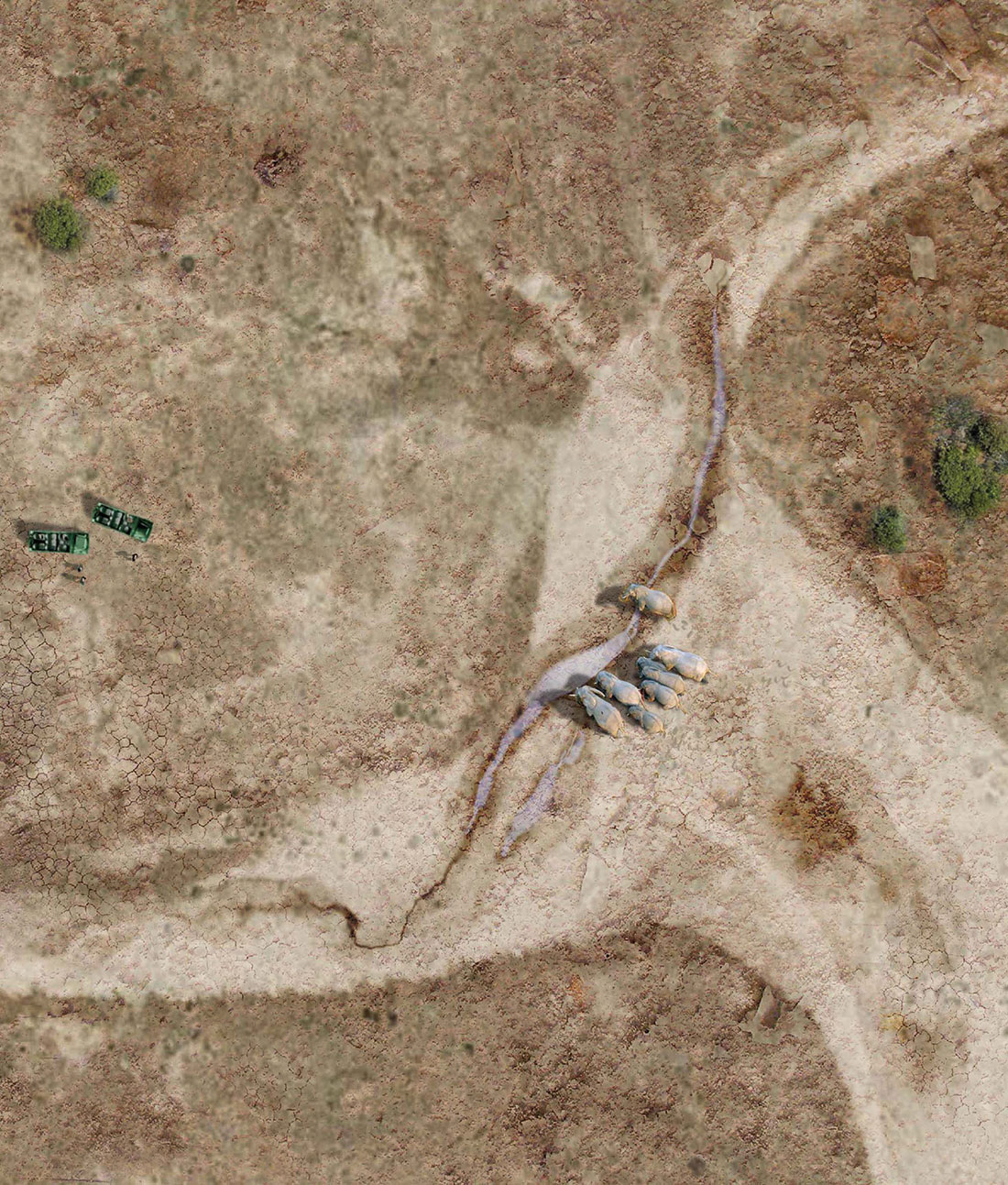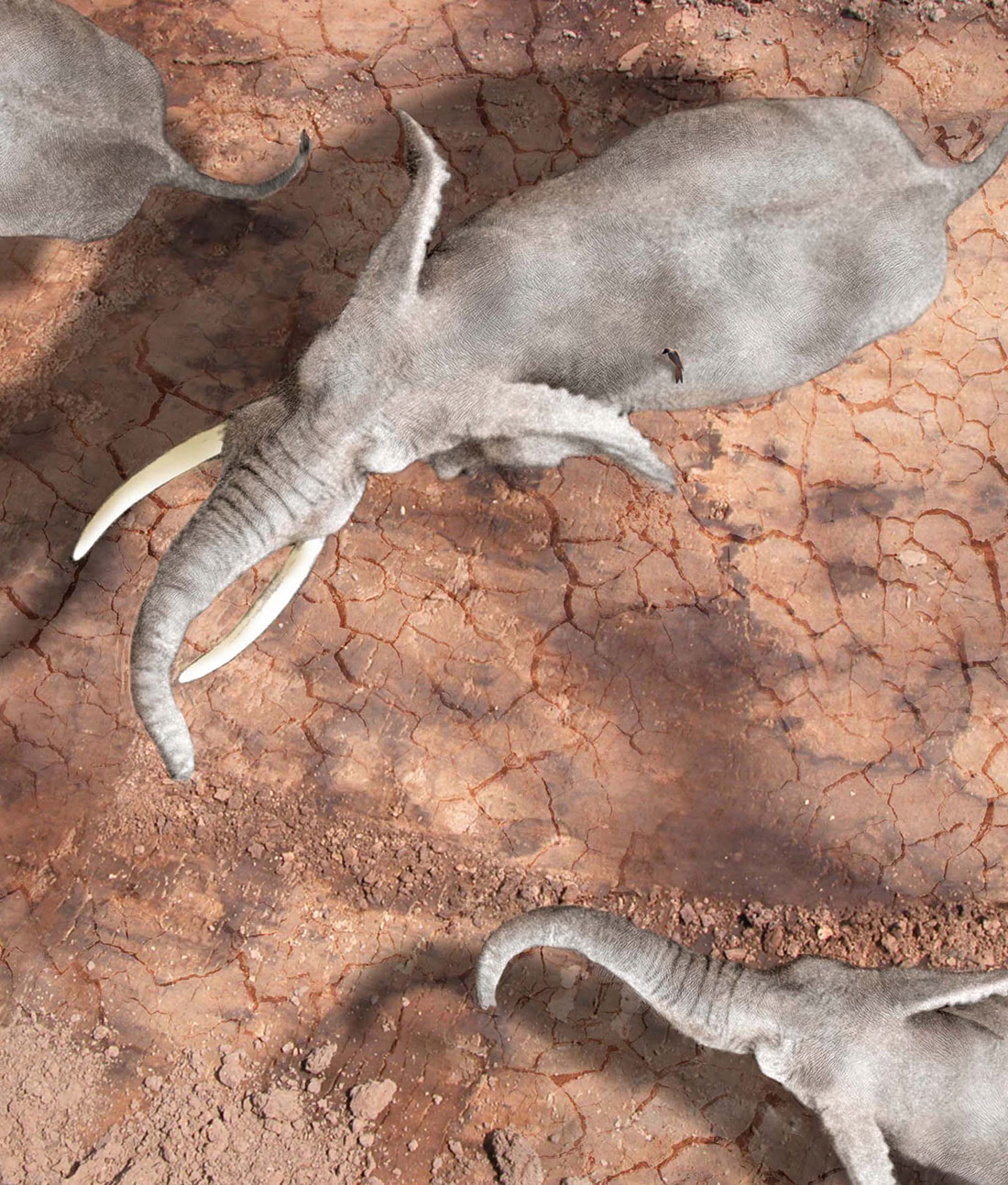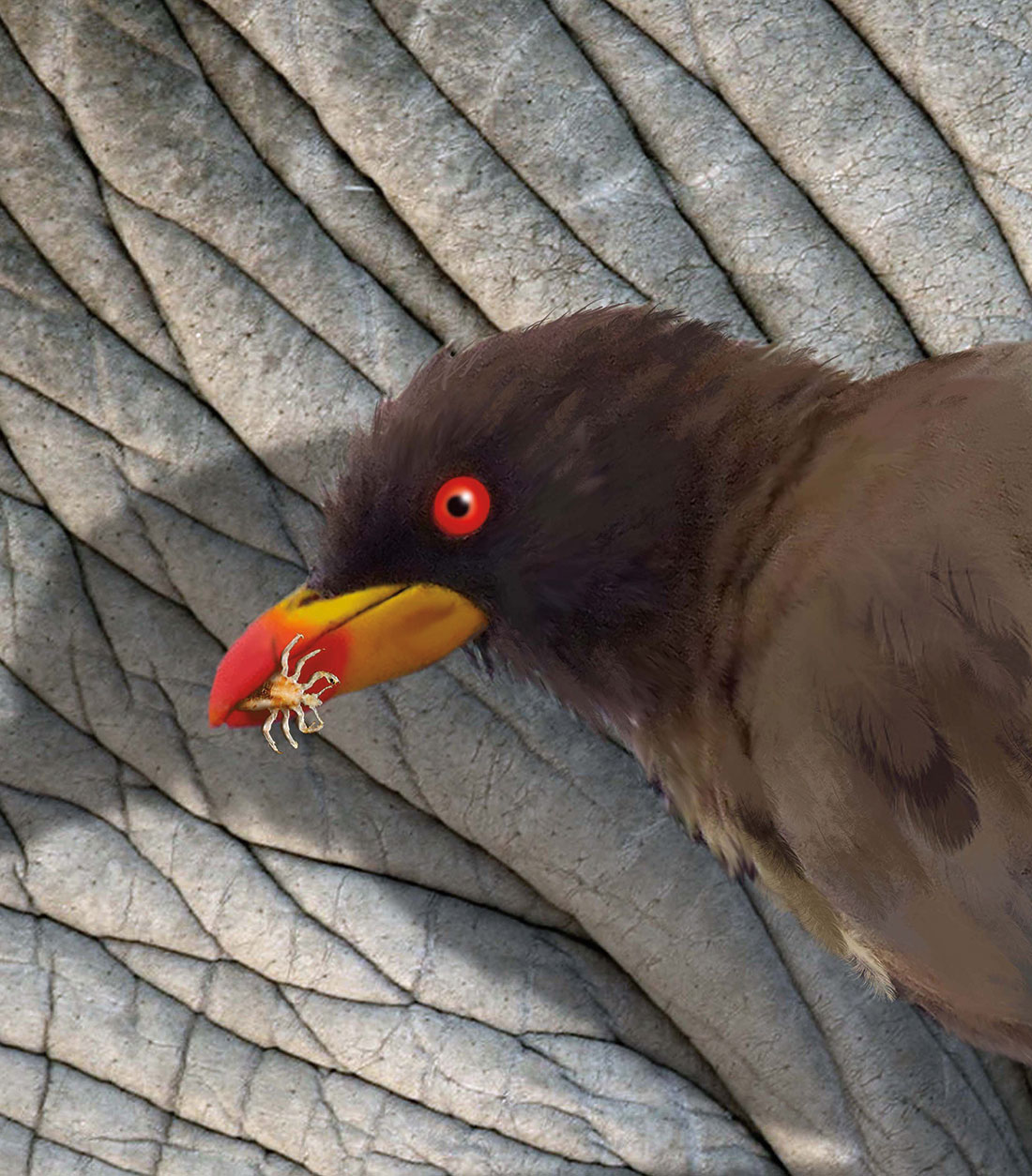Astrophysicist Caleb Scharf Digs Deep into 'The Zoomable Universe'

A new book by astrophysicist Caleb Scharf, "The Zoomable Universe" (Scientific American/Farrar, Straus and Giroux, 2017), takes readers all the way from the size of the observable universe — as far as light can travel in 13.8 billion years — down to the shortest theoretical measurable length, the Planck length. Along the way, Scharf explores the formation of the universe, our galaxy and Earth, the makeup of life and quantum physics, and the complexity that develops when you look beyond the surface at any scale.
Scharf's book operates based on orders of magnitude: 10^27 meters, or 10 multiplied by itself 27 times, encompasses the universe as we know it, whereas 10^-35 meters, or 1 divided by (10×10… 35 times), denotes the finest structures of space-time we can currently imagine.
Space.com talked with Scharf about walking scale-by-scale through the universe, the biggest changes that might await our understanding and the potential strangeness of alien life. [The History & Structure of the Universe (Infographic)]

Space.com: Why did you decide to write this book?
Caleb Scharf: I guess there were two things that motivated the book. One of those was a fondness for the original "Powers of 10" … There was a movie, ["Powers of 10" by Charles and Ray Eames, in 1977] and then there was a later book with physicist Philip Morrison. I, and the publisher, and in the end the artist, Ron Miller, had great fondness for that. Part of the idea was "Hey, let's update that." A lot has happened in the last 20, 30 years, with immense amounts of change in science, in our understanding both on the cosmic scale [and] on the small scale. That was part of the motivation — we could try to update this, breathe new life into it, both play homage to the original but also do something a little different, bring it a little more into the modern era, have some infographics, have greater technical emphasis.
And then the other piece of it, really — I wanted to write something that talked about the nature of reality, which sounds pretty arrogant and ambitious, but, again, this idea [that] we have learned so much about both the cosmic scale of reality, the scale of us, the scale of the Earth, the scale of microscopic and also the subatomic, it would be great to bring all of that together, to bring a big picture. But how do you do that? There again, scale seemed like a neat way to do that.
It's just such a neat way to tell the story about reality. You could do it in different ways, I'm sure, but there's something about scale that helps you create that narrative that you want; it gives you a trajectory, it gives you a pathway to follow. So it all kind of came together, those two ideas, those two desires; one was, let's reproduce this magical thing that was "Powers of 10," but then also [find a] way to talk about the nature of reality using all the latest research, to tie it together. And it just so happens that scale does that for you. It's like this connected tissue.
Get the Space.com Newsletter
Breaking space news, the latest updates on rocket launches, skywatching events and more!

Space.com: What changed the most in our conception of the universe since the original "Powers of 10"?
Scharf: I think perhaps one of the biggest shifts, from my perspective, has been the rise of complexity not just as something to be ignored, or pushed aside where it's too difficult — let's just give an approximation. Complexity, and the science of complex systems, is now at the absolute forefront of modern science, and that's across all fields, from cosmology down to particle physics. Complexity and chaos, they reign supreme. I would like to think that one of the things we've done with this book is integrate that with the general extension of our understanding at various scales … to give a greater sense of everything happening at the larger scales and the smaller scales are interconnected, and that complexity is rife everywhere in the cosmos. In the text I try to allude to this to some extent as well; even at the end I talk about [the idea that] the path we've taken in this book is just one potential path out of trillions of untold paths, that you could tell this story in a trillion other ways, each of which is valid, and each of which touches on some other aspect of the cosmos.
Back when the original "Powers of 10" was done, as beautiful as it was, it was kind of still a little mechanical. It's like, if we lay this all out, this is what we know, this is what we know… You kind of feel like soon you can write one equation and that explains it all, and I think now we understand that the universe is tricksier than that. Stuff emerges. We've emerged out of the cosmos, which is pretty extraordinary, and other complex things are emerging all the time. [7 Theories on the Origin of Life]

Space.com: And where would you anticipate this book going out of date most egregiously?
Scharf: Ah, that's a horrible thing. It's a good question… It's a little hard to tell. The book, although it tries to be reasonably balanced in talking about, for example, cosmology, it talks about dark matter, it talks a little bit about dark energy, it talks about things like the multiverse; there could be some stuff there that we really have got wrong. I think dark matter, there's clearly something we're not quite getting there. [Just recently,] two of the major laboratory experiments trying to detect dark matter particles have come up blank again, and there's a general — at least I sense a feeling in the field that while most people would say it would take a lot to overturn the basic idea of dark matter, we're kind of entering a regime where it's getting a little worrisome. And that suggests to me that there could be some big surprises, which would rewrite chapters one and two of the book at some level.

At the subatomic end, the same kind of thing could be said: Right now, and I tried to hedge my bets a little bit and talk about quantum mechanics, it's interesting that we still don't have a full conceptual picture of what quantum mechanics is really telling us. The idea of, for example, different interpretations of quantum mechanics … it's pretty remarkable that we don't yet have one of those confirmed as absolutely the truth. We tend to work with the Copenhagen interpretation, because that's just what we've done; I see in the research area that deals with this, there is discussion of this. There are things in the quantum world that are a little unnerving that we haven't gotten a better grasp of. So it's conceivable something could happen there.

Otherwise, I think the other area that might radically change — and this is a positive change — would be [if we] discovered life somewhere else. And that would mean changing the whole middle of the book. Well, I exaggerate a little bit. But I think there's the potential there for discovery that shifts our perspective in a profound way about specialness of life on Earth, about the nature of life on Earth … If we find something somewhere else, whether it's on Mars or indicators on an exoplanet, that's worth a lot. That would be, definitely, a revised edition. [10 Exoplanets That Could Host Alien Life]

Space.com: Would life elsewhere necessarily be in approximately the same orders of magnitude as us?
Scharf: It's a tricky one. I would be interested but really shocked if life was on a very different scale, either on a vastly larger scale, you have some weird, integrated organism on the scale of 20, 30, 40 km or so, and I'd also be pretty shocked and astonished if it was somehow smaller than a moderately-complex molecule. For the microscopic scale, it seems hard to imagine how you could have structures that have the necessary complexity to give rise to living systems. Molecules are kind of the minimal thing already, in that sense, so molecular biology may be a universal thing. You probably don't have subatomic biology, and it's just because of the complexity that is enabled. And then on the big scale, yeah. There has been work done on this relating, for example, energy use to scale and efficiency, and it seems — unless it was built very, very differently, the bigger you get, the more problematic it gets from an energy perspective, but then also from a communication perspective.
If you inflated the human brain to 100km across, that actually, if you think about all the little electrochemical signals buzzing around, unless you rebuild the speed at which those signals propagate, you've then got a very big, very slow brain… Maybe that's my human-centric bias, but it seems that it would be difficult for an organism to evolve that way and still be able to respond to its environment in a way that prevents it from going extinct. Stuff happens, something falls over, something chases you — these are presumably going to be happening on pretty quick timescales. The bigger you are, the harder it is to deal with that, apart from all the energy efficiency ideas. But that's all assuming that living systems really do have to be built out of carbon chemistry, and I would say that while that seems like the likeliest thing, because carbon chemistry is just so astonishingly rich, we don't know. Maybe living systems can be built out of different substrates; that would certainly be interesting.
This interview was edited for length. You can buy "The Zoomable Universe" at Amazon.com.
Email Sarah Lewin at slewin@space.com or follow her @SarahExplains. Follow us @Spacedotcom, Facebook and Google+. Original article on Space.com.
Join our Space Forums to keep talking space on the latest missions, night sky and more! And if you have a news tip, correction or comment, let us know at: community@space.com.

Sarah Lewin started writing for Space.com in June of 2015 as a Staff Writer and became Associate Editor in 2019 . Her work has been featured by Scientific American, IEEE Spectrum, Quanta Magazine, Wired, The Scientist, Science Friday and WGBH's Inside NOVA. Sarah has an MA from NYU's Science, Health and Environmental Reporting Program and an AB in mathematics from Brown University. When not writing, reading or thinking about space, Sarah enjoys musical theatre and mathematical papercraft. She is currently Assistant News Editor at Scientific American. You can follow her on Twitter @SarahExplains.









